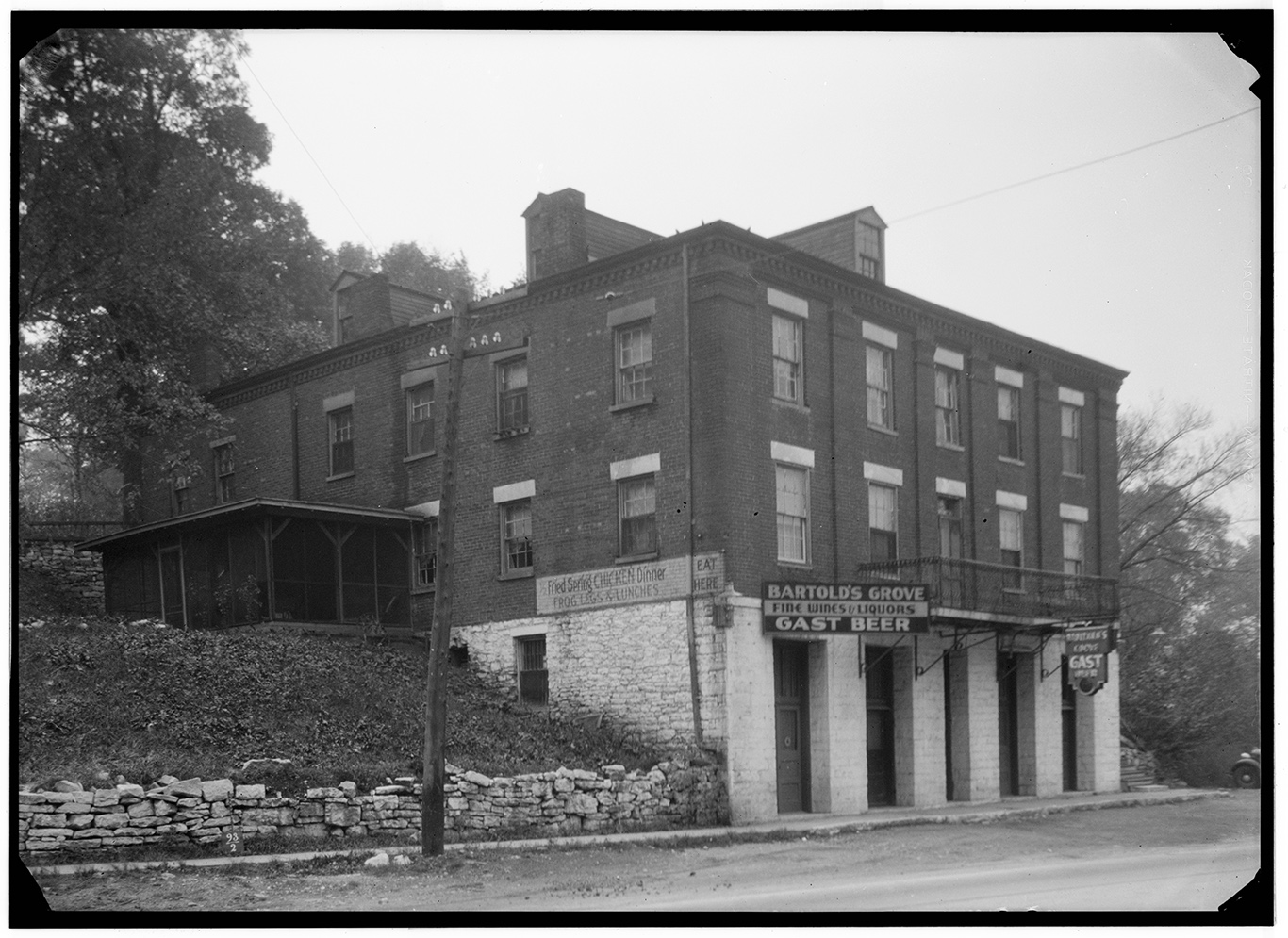
Reader Michelle emailed a couple of interesting images to me that I felt warranted a post of their own. From the information available online she has figured out a way to show us almost exactly where Bartold’s Inn was once located. Enough people have questioned me about this that I thought if I put it in the title of this post it may help folks who are searching for this information to find it.
I’ll start off with a couple of images some of you have seen before just so you’ll have them handy.
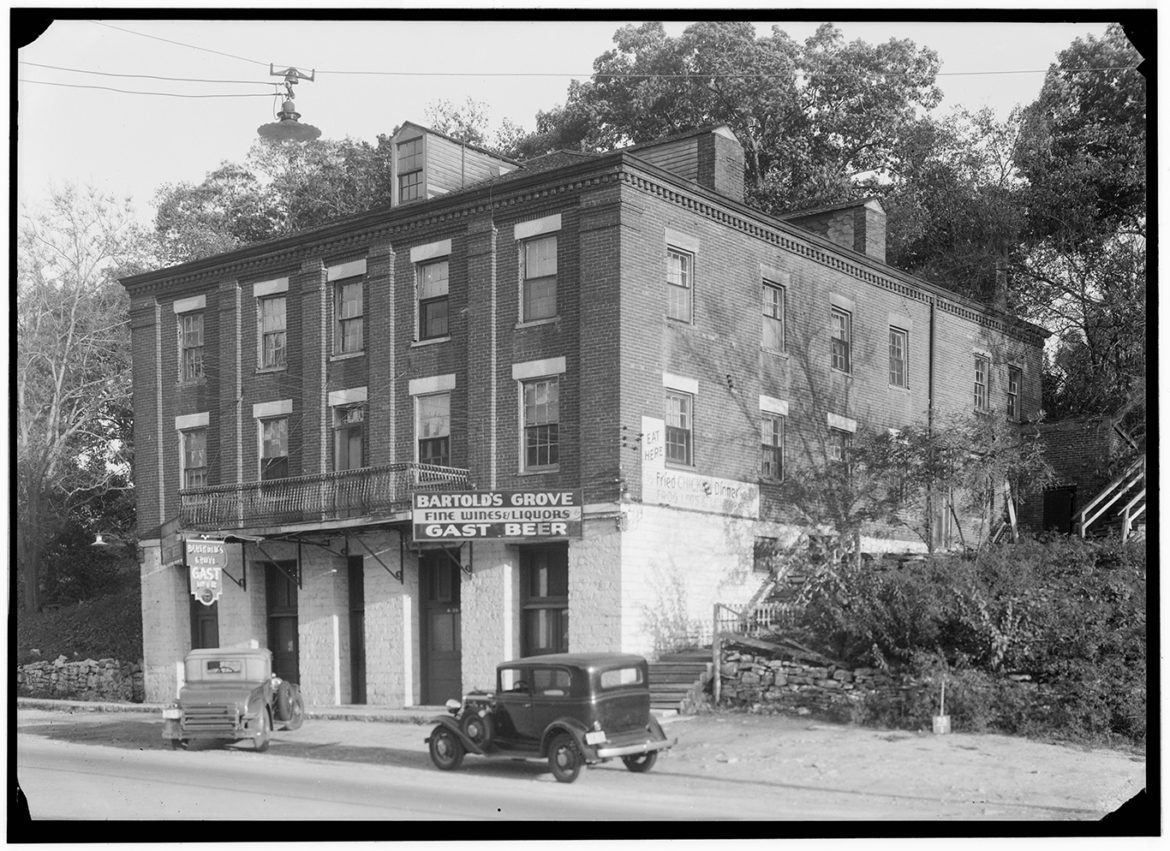

HABS was the brainchild of Charles Peterson of the National Park Service who said at the time, “The plan I propose is to enlist a qualified group of architects and draftsmen to study, measure and draw up the plans, elevations and details of the important antique buildings of the United States. Our architectural heritage of buildings from the last four centuries diminishes daily at an alarming rate. The ravages of fire and the natural elements together with the demolition and alterations caused by real estate ‘improvements’ form an inexorable tide of destruction destined to wipe out the great majority of the buildings which knew the beginning and first flourish of the nation. The comparatively few structures which can be saved by extraordinary effort and presented as exhibition houses and museums or altered and used for residences or minor commercial uses comprise only a minor percentage of the interesting and important architectural specimens which remain from the old days. It is the responsibility of the American people that if the great number of our antique buildings must disappear through economic causes, they should not pass into unrecorded oblivion. “
Was this guy forward thinking or what? You will find much of interest if you Google HABS.

Reader Michelle’s comment from an earlier post. “Doing just a small amount of research on Bartold’s Inn, I was able to see it’s exact location with the Historical Aerial View from 1955 and 2019 with the split screen option. I believe the 2nd black lamp post with 2 maple leaves hanging on it, south (correction) side of Manchester from Hanley Road is the edge of where the building was. The split screen clearly shows it there. I’m not sure if you have already done this, but I thought I’d share this.”
I’m glad you did, Michelle because I had not done that. I didn’t even think of it. We can tell the building is the Bartold Inn because its roof dormers are visible.
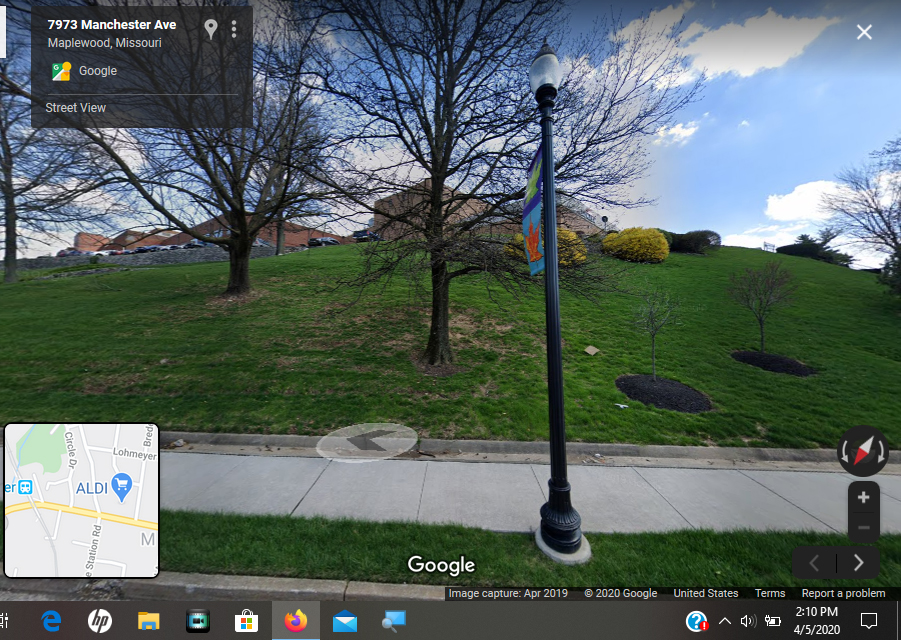
Michelle goes on to say, “My Dad, who grew up in Maplewood in the house on Hanley Road (end of Folk Ave) that used to sit smack in the middle of Hanley Road when it was still separated lanes before the building of the Walmart, etc. He was born in 1929 and grew up here and went to MRH. He told me he had his first taste of beer at Bartold’s when he went there with his Dad. He said he was about 12 years old and his Dad let him have a couple of sips but he didn’t like the taste back then. He remembered Bartold’s well. He passed in 2017 still living in Maplewood.”
This is fabulous, Michelle. If I hadn’t stopped drinking altogether I might on a nice warm day go sit on the grass there and have a cold one. I’d toast the memory of your father and the memory of the now vanished Bartold family that once operated the inn and grove. And I’d toast their magnificent roster of guests that included not only many city folks just out for an enjoyable weekend but also Ulysses S. Grant and Mark Twain and even our own Charles S. Rannells who was known to stop in for a little libation now and then.
Doesn’t that seem like a great idea? If anyone should decide to do it, just remember those names of who you’re toasting. When the Sunnen security guy shows up or the Maplewood Police, you may have some explaining to do.
Much thanks to Reader Michelle for sharing these images and her thoughts with all of us.
Doug Houser April 15, 2020
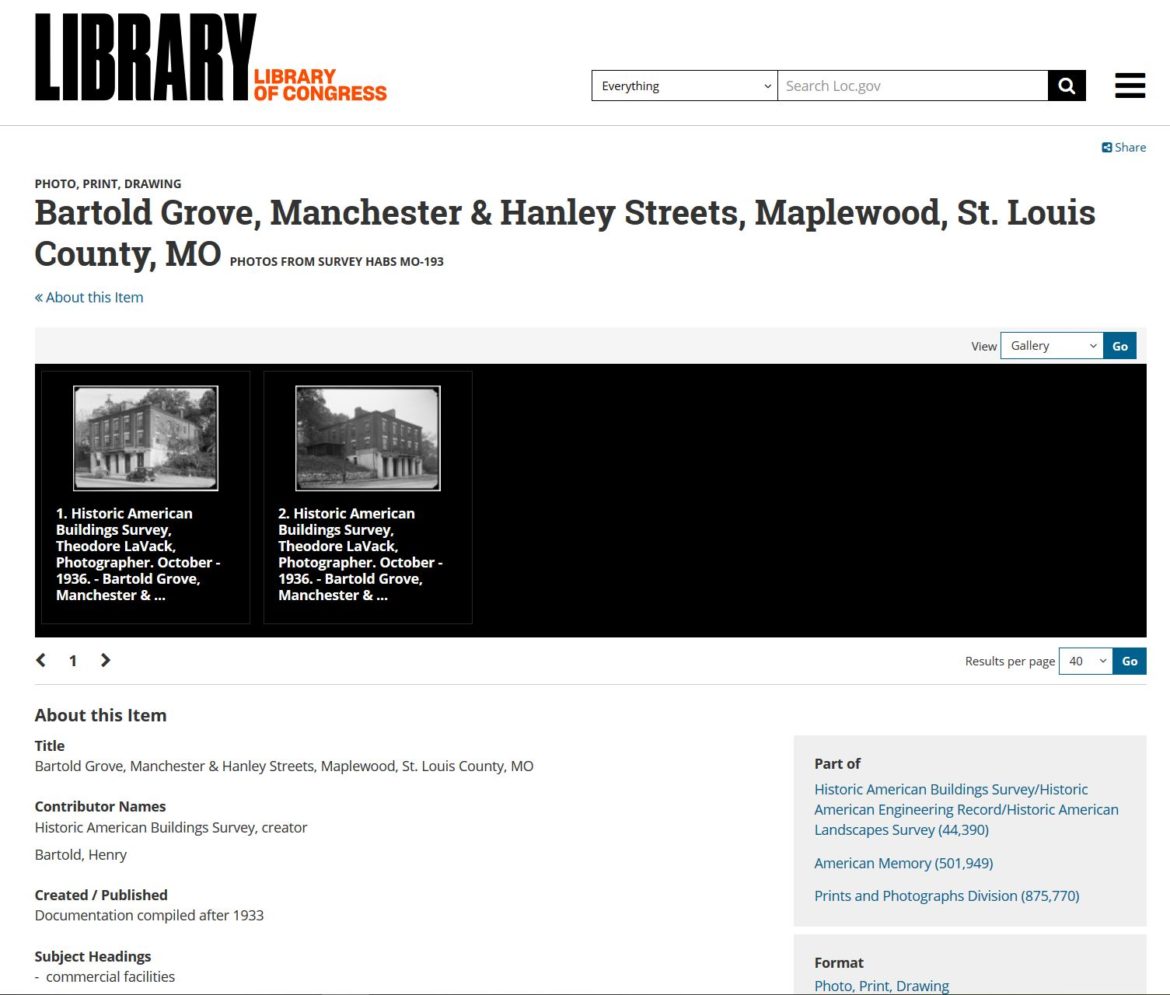
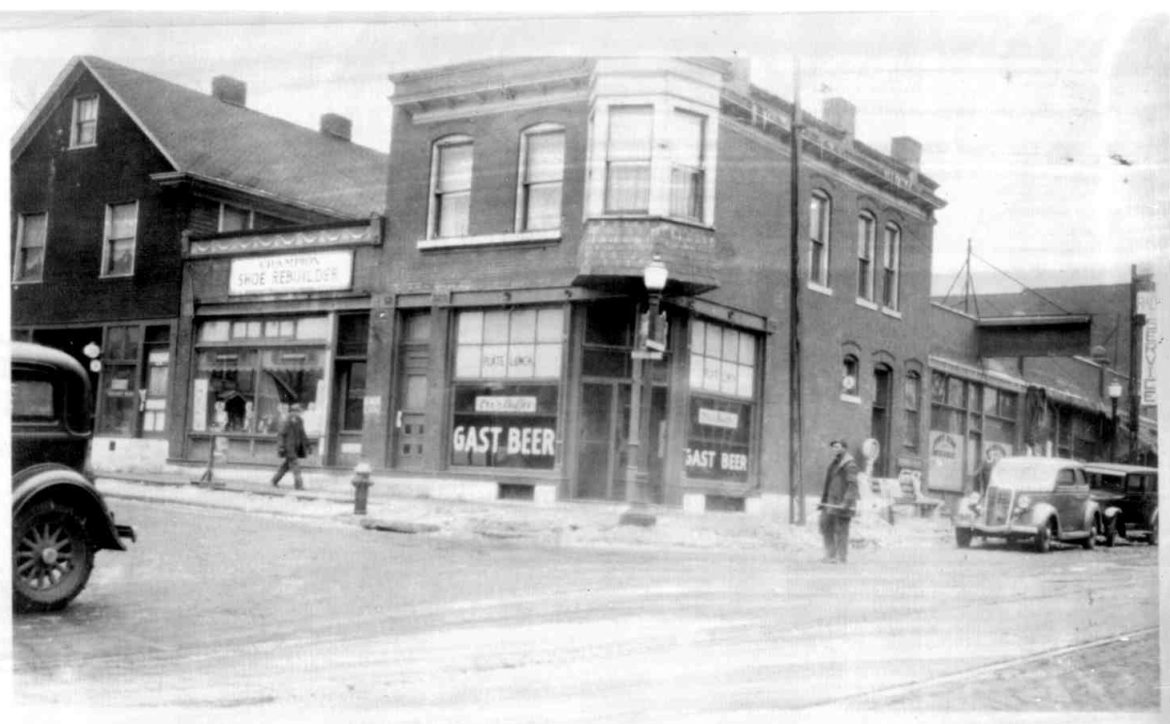
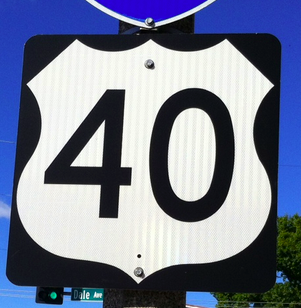
I grew up in Maplewood and in the late 50s worked at the Fleet station at Manchester and Hanley.
Another guy, Roy Filkens and myself went over there one evening and explored the inside. It was spooky in there and had been closed up for years. Quite a place.
I also worked at Sunnen from 1-66 to 7-92 and remember some old timers talking about having a beer at Bartolds. If memory serves, wasn’t there a small tavern just east of Bartold’s grove?
I don’t know the answer to that one, Don. If there was, it was prior to my arrival on the scene in 1975.
Great post!! Really enjoyed reading this 🙂
Thank you, Brenna. Your kind words are greatly appreciated.
Doug, the Gast Beer advertised on the sign was in operation only 1946-‘48, so that might tell us something.
What’s your source, Mr. Miner? The two automobiles are mid-30’s vintage. I know that alone doesn’t mean much but given that the HABS was begun in 1933, I’m more inclined to believe the image is from right around the same time. I’m going to check this out. I may be able to find the date of the image on the HABS. I think I have another early photograph from downtown Maplewood with a Gast Beer sign in a window. If I can find this stuff, I’ll post it.
Tom Bakersmith sent by email some data from a site called [email protected]. Breweries listed under St. Louis Missouri 118 which records Gast Brewing Co. in one form or another, beginning in 1900, skipping 15 years from 1919 to 1934, and back in business until 1948. Thanks, Tom.
Did she mean to say “south” side of Manchester? Great post. Always interesting to know exactly where history happened.
Good catch, Mr. Smith. I missed it. I’m sure Michelle meant to say south.
Hi, Doug, I have a little story about Bartold’s Grove…my mother was born in late 1919 on Bartold Ave. (Near where it made the left to head to Laclede) She was raised on Bartold and Flora. I believe Flora Ave. was then called Gerard. She told me that her Grandfather used to take her in her buggy, along with the dog, for walks. The story is that they always ended up at Bartold’s Grove. Her Grandfather would leave her and the dog outside while he went in for a beer or two!
I remember the building but the boys in the neighborhood used to explore inside the abandoned inn. No girls allowed! I was told that the back wall was solid limestone.
Thanks for the memories.
Hey Janet, I really like your story about your grandfather leaving your infant mother and the dog outside while he went in Bartold’s to have a beer. My first thought was that surely they could have let the dog come in? I’m kidding.
The old reliable map from the 1909 Plat Book of St. Louis County shows that the street name, Flora, was not used west of Big Bend. Between Big Bend and Laclede Station Road, it was called Cartan Ave. West of Laclede Station Road, the map shows a short street named Gerard that appears to have run alongside the electric car line which ran from the Maplewood Loop (Sutton Park now) to Webster Groves and beyond.
The adventurous boys were telling you the truth. My friend, Larry Giles of the National Building Arts Center, was one of the boys who explored it. He told me the same thing. The back wall of the building was the natural limestone outcropping.
Doug, One more addition to the storied limestone wall in the rear of Bartold’s. Living here since ’70 I remember several stories about a natural cold spring running through the rear wall area of the Inn, apparently this was where beer was stored allowing them to have cold beer all year long,( cold as they could back then, not compared to now,) The memories of the back wall and the availability of caves and springs in the cliffside would definitely back this assumption up.
That would be interesting, Bill, if it were true. Larry Giles, a reliable eyewitness, says it’s not.
Really enjoyed that information Doug. Thanks for posting.
You are welcome, Nancy. It’s good to hear from you.
Comments are closed.